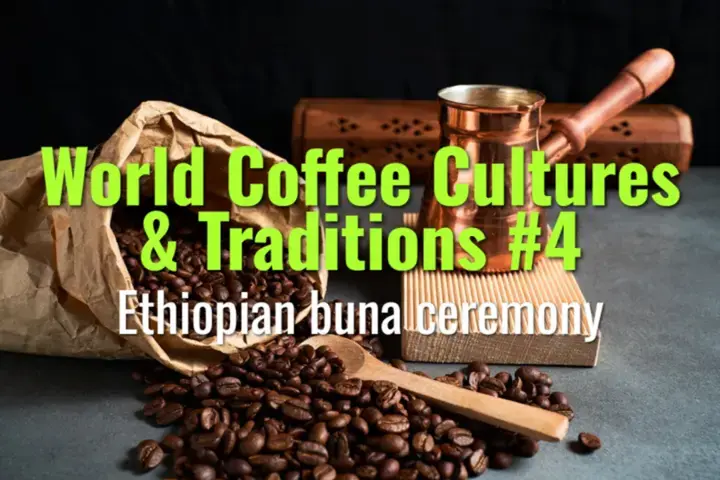Ethiopian buna ceremony
The traditional Ethiopian buna (coffee) ceremony, its rituals, and cultural importance as a cornerstone of hospitality and community.
- Coffee Basics Nerds
- 2 min read
Article 4 of 12 in World Coffee Cultures & Traditions/

Cultural Significance
- Ethiopia is considered the birthplace of coffee, with deep cultural traditions around its preparation.
- The buna ceremony is a social and spiritual ritual, symbolizing respect, friendship, and community.
- It can last several hours and often marks important gatherings, holidays, or welcoming guests.
Ceremony Setting
- Conducted mainly by women, often in traditional white cotton dresses.
- Fresh grass and flowers may be spread on the floor to create a sacred, welcoming space.
- Incense (often frankincense or myrrh) is burned to purify the area.
Steps in the Buna Ceremony
- Washing & Roasting
- Green coffee beans are washed and roasted in a flat pan over open flame.
- Guests are invited to smell the aromatic smoke.
- Grinding
- Roasted beans are ground with a traditional mortar and pestle.
- Brewing
- Grounds are boiled in a jebena, a round-bottomed clay pot with a long spout.
- Water and coffee are combined, boiled, and poured in a slow, deliberate ritual.
- Serving
- Coffee is poured into small handleless cups (sini) from a height for foam.
- Typically served with sugar, sometimes salt, butter, or spices.
Rounds of Coffee
- The ceremony usually involves three rounds:
- Abol: First round, strongest.
- Tona: Second round, milder.
- Bereka: Third round, weakest, symbolizes blessing.
- Guests are expected to drink all three rounds as part of the ritual.
Social Role
- Serves as a platform for conversation, storytelling, and community bonding.
- Symbolizes hospitality—declining to participate may be considered impolite.
Summary
The Ethiopian buna ceremony is more than brewing—it’s a multi-hour cultural ritual that celebrates coffee as a source of hospitality, spirituality, and social connection. With its incense, roasting, jebena brewing, and three rounds of sharing, it represents the heart of Ethiopia’s coffee heritage.